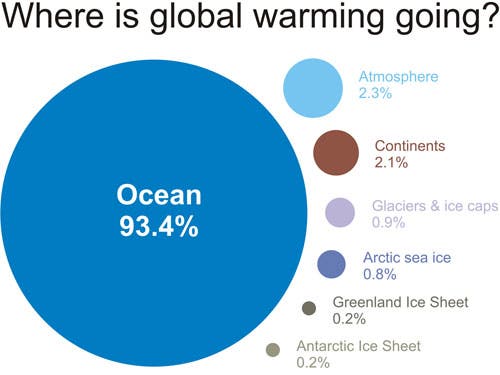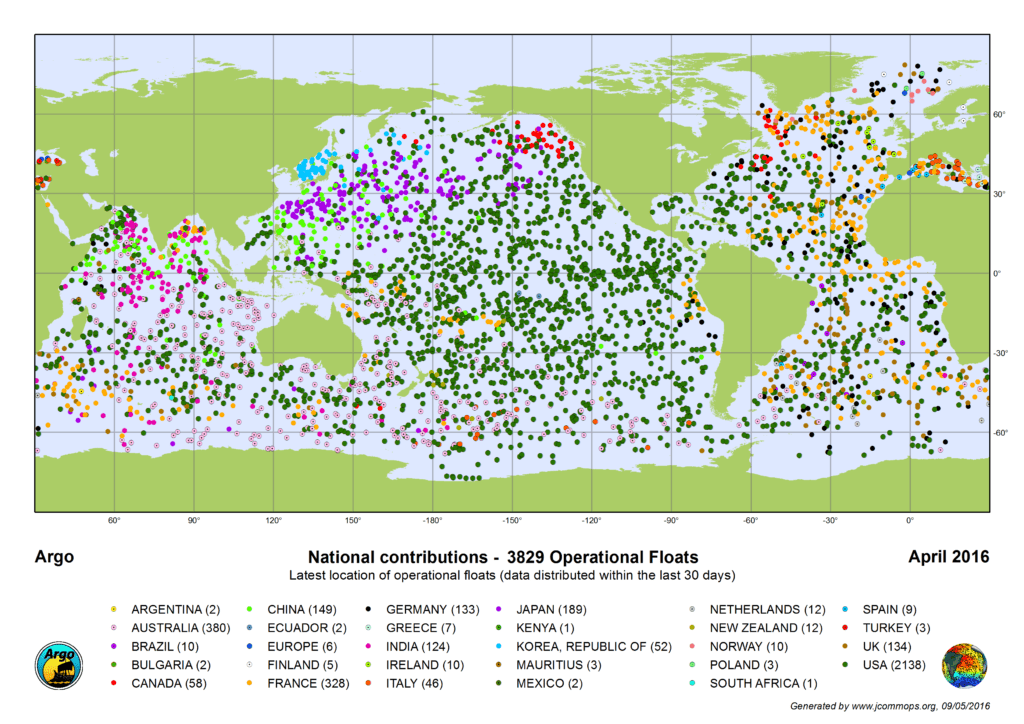As our understanding of ocean dynamics improves, a bleaker picture is revealed. As it turns out, the oceans have been heating up even more than we believed.

We know the planet is warming up, and we know that this is happening because of us (despite what some media and EPA leaders might say). However, we understand some areas better than others — specifically, we understand ground warming much more than oceanic warming, and for a pretty straightforward reason really — it’s much harder. We don’t live on oceans, we don’t have permanent stations on oceans, and it’s pretty hard to get meaningful data over the immense oceans. Now, a new study has quantified the rate of oceanic warming, with unprecedented accuracy and precision. Unfortunately, there’s no good news.
Measuring oceanic warming has always been a laborious and difficult task, but it got a big boost in 2005 thanks to the so-called Argo probes. Argo is a system for observing temperature, salinity, and currents in the Earth’s oceans, providing real-time wirelessly every time they float to the surface. They can go down to 2000 meters deep, so they provide data both on the ocean surface and at its depths. They basically measure conductivity, pressure, and temperature profile, but from these, salinity and density can be calculated and a trove of information can be deducted. There are almost 4,000 such probes in the worlds open water, greatly improving our understanding of ocean dynamics. Of course, integrating datasets from 4,000 probes is anything but easy, but this is certainly better than before.

Still, this leaves us with a question — how did things evolve before 2005, before the Argo probes? Writing for The Guardian, John Abraham, one of the authors, explains:
“First, we corrected past data for known biases in measurements. Second, we related the temperature measurements to results calculated from advanced climate computer models. Third, we applied temperature knowledge to larger areas so that a single measurement was representative of a large space around the measurement site. Finally, we used their knowledge of recent and well-observed temperatures to show that the method produced excellent results.”
They were able to backtrace their innovative approach all the way to the late 1950s, showing firstly, that the rate of global warming has changed dramatically in the past sixty years, and secondly, that the oceans have been heating up 13% faster than we’d thought. This is highly worrying, as it shows what many researchers were already fearing — the so-called “missing heat,” the observed atmospheric global warming hiatus, is actually in the oceans. John Fasullo, one of the co-authors, underlined this point:
“This study shows that more heat is likely to have been absorbed by the oceans over the past 50 years than had previously been reported. With upward revisions in our estimates of the climate’s sensitivity to greenhouse gases and the associated resultant sea level rise.”
This might not seem like much of a difference, but it’s huge. You might also think that because it’s going into the oceans and not on land, we shouldn’t care about it as much because it doesn’t affect us — that would also be wrong. Global warming can affect sea levels, coastlines, ocean acidification, ocean currents, seawater, sea surface temperatures, tides, the sea floor, weather, and trigger several changes in ocean bio-geochemistry, potentially killing of countless sea dwellers — all of which have a huge influence on our lives. Also, it’s worth thinking about another thing. The ocean has been acting as a heat sink, more so than we thought. What happens when the sink fills up?
Journal Reference: Lijing Cheng, Kevin E. Trenberth, John Fasullo, Tim Boyer, John Abraham and Jiang Zhu — Improved estimates of ocean heat content from 1960 to 2015. DOI: 10.1126/sciadv.1601545


